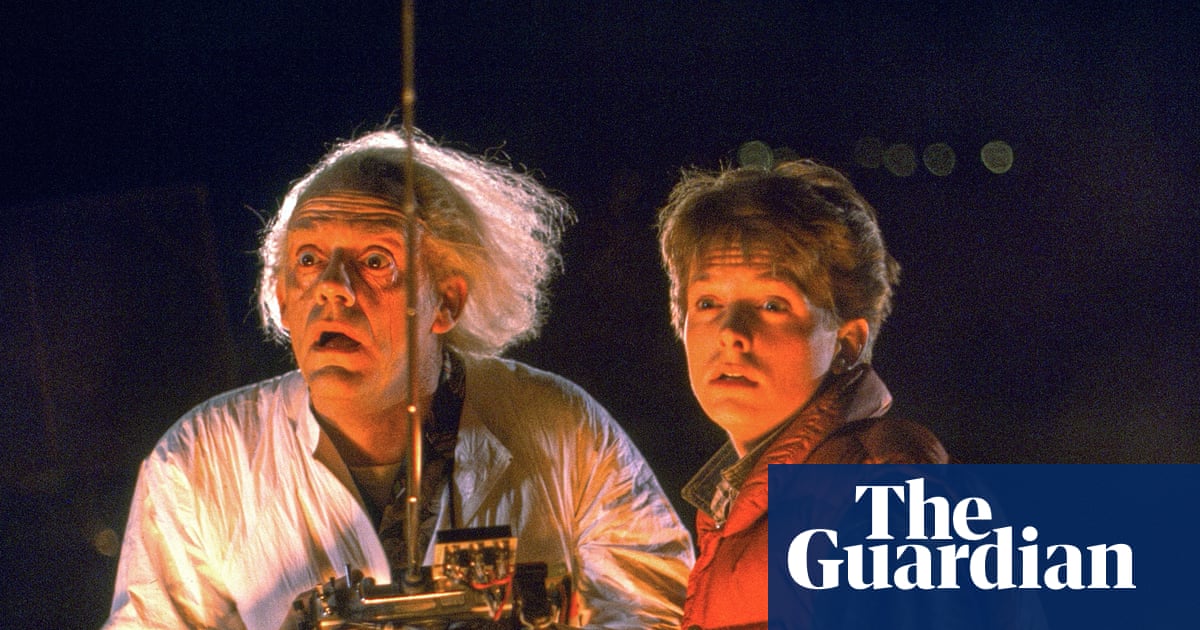Michael J Fox has already eked out four books of Hollywood memoir, so the justification for a fifth – written with longtime collaborator Nelle Fortenberry – ought to be good. It is: the subject of these 176 pages is a three-month period in 1985 when Fox was simultaneously shooting his breakout sitcom role in Family Ties and the career-defining American classic, Back to the Future.
That’s two more-than-full-time jobs for one little guy, necessitating that the then 23-year-old actor work 20-hour days, six days a week. This schedule was only possible because the mid-1980s was a time before showbiz labour laws caught up with basic human decency. These days, we’re told, a standard contract “demands two weeks of buffer time on either side of a job”, while Fox didn’t even get an hour.
How did he do it? This book tells us, drawing on the memories of colleagues and friends to fill in details where Fox’s own sleep-deprived brain falls short. The material might have seemed stretched thin to fill even this relatively slim volume, were it not for the fact Fox was also a singularly unlikely – and therefore fascinating – movie star prospect. Working-class, 5ft 4in and Canadian; that this short king ever made it so big is a natural-law-defying miracle, on a par with time travel itself.
Or maybe not. Fox writes that, initially at least, his height was a significant career advantage. It meant the Family Ties producers could secure him a US work visa on the grounds that “I was special and unique in America: old enough to work the long hours of an adult, but with a look that allowed me to play a much younger character”.
His wayward adolescence, spent kicking about in suburban Toronto parking lots, had also furnished Fox with a skillset ideally suited to playing Back to the Future’s hoverboarding, bully-outsmarting, rock-n-roll-inventing hero, Marty. He arrived for his first day already a proficient skateboarder (pro-skateboarding legend Tony Hawk is apparently a fan of the movie) and garage-band guitarist.
But perhaps Fox’s most valuable skill was his tireless professionalism. Full-colour set photos seem to corroborate the actor’s own claims that he “never complained about the hours” and was “full of joy, even at 3.00 am”. The most persuasive evidence of this, however, is the thoughtful, affectionate way he reflects on his interactions with on-set colleagues, even when it’s clear these relationships were far from frictionless.
The circumstances of Fox’s arrival on Back to the Future were already awkward. He was replacing the previous “Marty”, actor Eric Stoltz, a month into shooting, after director Robert Zemeckis and executive producer Steven Spielberg became convinced he wasn’t the “right fit”. Add to that the showbiz hierarchy of the day, which placed a lowly TV star several rungs beneath trained theatre actors such as Christopher Lloyd, who played “Doc”, and Fox had his work cut out for him. Perhaps it was the knowledge that he’d already pulled off one impossible task – making it to Hollywood in the first place – which gave him the confidence to attempt another.
Back to the Future super-fans are predictably well served here, with titbits like the fact that no one on set thought the DeLorean was at all cool (“Let’s face it – it’s a shit car. Slow to accelerate, with cheap appointments”), and the shift of Marty’s “Johnny B Goode” to B rather than B-flat, the 80s kid taking inspiration from Jimi Hendrix’s transposed cover, despite it being 1955. Fox’s evocative descriptions of a lost Hollywood – pre-word processor, never mind pre-internet – will also interest a more general readership.
We wouldn’t care at all, were it not for the fact that Back to the Future really is the enduring classic this book assumes it to be. Much high-minded critical musing over the past 40 years has tackled the question of why, but nothing quite nails it like the handwritten audience response card that Zemeckis received after the very first screening, and apparently still has pinned to his office bulletin board: “This is the most Godly movie I’ve seen,” wrote the awestruck, anonymous viewer. “It fucking rages up and down.” Amen to that.
